Video laryngoscopes have increased in use during the pandemic in order to better protect anesthesia providers from potentially aerosolized COVID-19 during intubations. Before that, they were frequently employed in difficult airway situations, where they have become invaluable.
Should video laryngoscopes be the standard of care in outpatient surgery facilities? I don't know that we can make that argument yet. Still, every surgery center should have at least one of these on hand for unexpectedly difficult airways, and your anesthesia providers must be able to quickly grab it and know how to use it. Your facility should already screen patients for potentially difficult airways, but screenings aren't always effective. Many providers find out they're dealing with a challenging intubation during the first attempt to secure the airway.
The main keys with these devices from a clinical standpoint are reliability, ease of use and clarity. Anything else is often an individual provider's preference based on their experience and training. Let's take a look at the numerous factors to consider when evaluating these useful and potentially lifesaving devices.
- Reliability. I've trialed video laryngoscopes that produced fuzzy or shimmering images, had batteries that expired without warning or a light that wasn't bright enough. It's vital, then, that your anesthesia providers feel confident using these devices and are comfortable enough with how they work to increase intubation success and patient safety.
- Ease of use. A low-slope learning curve is key. In theory, your providers won't use these devices every day, so if they pick one up when faced with an unexpectedly difficult airway, they can't afford to spend time figuring out how to use it. This is a potential issue with more complex channeled video laryngoscopes (I'll discuss those shortly). If you're purchasing channeled devices, your anesthesia providers must be properly trained on the technology and comfortable using it.
- Clarity. A video laryngoscope's images must be clear enough to provide high-quality views of airway anatomy. It's especially important that the camera lens doesn't fog up. A difficult intubation is not the best time to discover the devices you purchased fog up or produce difficult-to-decipher video images. Thankfully, many of these devices have anti-fog technology built into the camera lens, a feature that contributes to a higher success rate on the first intubation attempt.
- Design. There are two common types of video laryngoscopes. Standard devices work like a conventional laryngoscope blade. You attach a blade to the device's handle, and insert the endotracheal tube with a stylus. The second type is a channeled device, in which you load the endotracheal tube into a channel integrated into the blade and guide the blade's tip into the desired position within the airway. Neither option is better. They're just very different, with different learning curves.
- Power. This is essentially a choice between disposable or rechargeable batteries. Whichever option you choose, look for video laryngoscopes that inform the provider at all times of how much power remains on the device. Losing power while they're maneuvering in the airway is the last thing providers want to worry about during a case.
- Blade type. Your options are reusable or disposable. From a clinical standpoint, it doesn't matter. I've never had a problem with a disposable blade popping off a handle or breaking, and there's no difference in usability. The benefit of disposables is that you never need to worry about them being clean. Reusable blades are expensive, but the cost can be deferred over numerous cases. They also present the need to manage reprocessing issues. How long until a reusable blade is reprocessed and available? What's the lifespan of the blade? With disposables, you don't need to track or worry about those factors.
- Screen size. It's nice to have a larger screen so you can see the airway more clearly. The question with video laryngoscope screens is not only how large, but where is it? Some screens are integrated into device handles. Some newer models connect to laptop-size monitors on a stand. Remember that portability is not nearly as important in an OR as it is in an ER or ICU.
The smaller the screen, the more strain on your eyes, especially if it's attached to the handle of the laryngoscope and you're in a traditional intubating posture. Conversely, intubating using a separate screen on a stand takes some getting used to. Does it make any difference in the bigger picture as far as how ergonomically good or bad the device is? Probably not.
- Data capture. This is a really cool capability: You can record difficult intubations and save them either to onboard memory or external USB drives. Then you can give that recording to the patient or put it in their electronic medical record so the next time they need to be intubated, the anesthesia provider can see exactly what makes their airway difficult and formulate a plan to manage it effectively. OSM
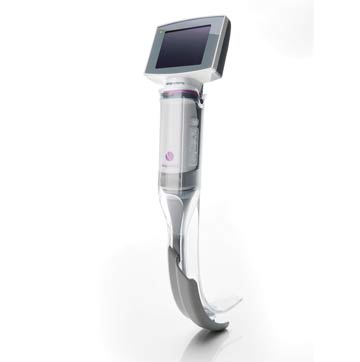
Ambu
King Vision aBlade
800-262-8462
This device provides a choice of standard or channeled disposable blades, making it adaptable to the anesthesia provider's preference. Its reusable 2.4-inch, full-color TFT LCD display features anti-fog treatment
and offers 160° panoramic views that can also be transmitted to external monitors and recording devices. While many video laryngoscopes now feature rechargeable batteries, this device runs for about 90 minutes on three disposable
AAA batteries.
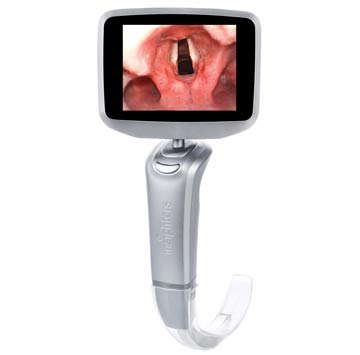
Bell Medical
Insight
800-875-2355
This product offers an interesting value proposition due to its handle's ability to fit flexible endoscopes and rigid laryngoscopes as well as video laryngoscopes. The device can record video, images and even sound,
and send the media virtually anywhere via USB, HDMI and WiFi. Insight features a 3.5-inch touchscreen with built-in rechargeable battery, and anti-fogging technology that activates instantly thanks to its integrated "smart heating"
chip. The device can also hook up to Bell's i-workstation, which features a 13-inch high-def monitor.
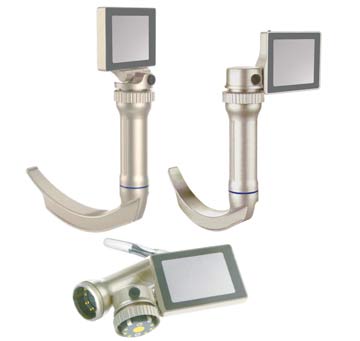
Berall Video L-Scopes
Vimac
718-515-1143
Developed by company owner Jon Berall, MD, Vimac lets the provider maintain a target on its screen while the advancing endotracheal tube passes the camera's eye. Vimac offers both disposable and reusable blades,
and operates on a rechargeable battery. Its handle and monitor are water-resistant. Video and images can be stored on its 16 GB memory card and transmitted to other devices via its USB port.
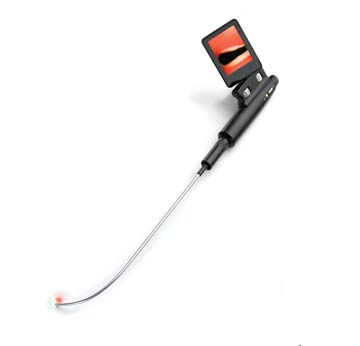
Clarus Medical
Clarus Video System
763-525-8403
Clarus says this device's differentiator is its malleable digital stylet, which can be shaped to fit a difficult airway. The stylet's design and high-definition camera provide superior access and maneuverability, and
visual confirmation of the endotracheal tube placement, according to Clarus. The rechargeable unit features a four-inch LCD screen with video-out capability, and furnishes either white or red LED light — the latter transilluminates
through skin. The stylet can be soaked for sterilization.
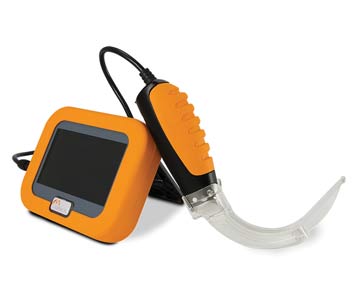
Dilon Medical Technologies
CoPilot VL+
855-267-4568
Dilon stresses the affordability of its video laryngoscopes, suggesting facilities can purchase multiple units for the typical price of one. The vendor says its patented bougie port's C-shaped channel for endotracheal
tube delivery enables providers to easily guide a bougie (rather than a stylet) toward the vocal cords. The portable high-resolution system uses disposable blades, with anti-fog sheaths available, and is powered by a rechargeable lithium
polymer battery that provides two hours of continuous use.
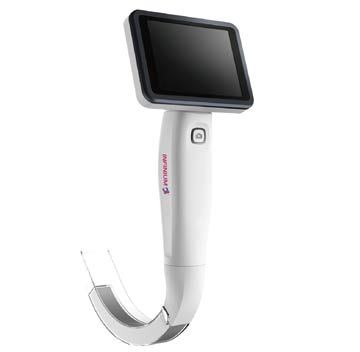
Infinium Medical
ClearVue
727-531-8434
This device, powered by a rechargeable lithium-ion battery, pairs a 2.0 megapixel full-view camera with a four-inch high-definition screen. The screen offers both anti-fog and anti-shatter capabilities. Touted as "lightweight"
by ClearVue at under 350 grams (about 12 ounces), the device features rigid steel construction and 4 GB of onboard data storage, which can store about 80 minutes of video. Its video signal can be outputted to other displays via its HDMI
output.
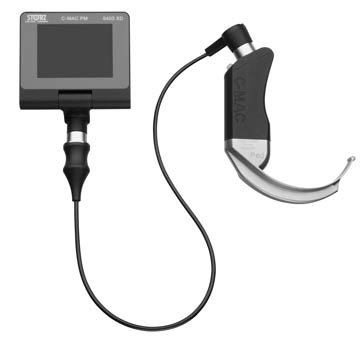
Karl Storz
C-MAC Pocket Monitor
http://karlstorznetwork1.com/airway-management
424-218-8100
This device is built to be nimble while maximizing provider and patient safety. Its 3.5-inch screen can be connected to the laryngoscope blade with an optional 50-centimeter extension cable, allowing the provider to visualize
the airway from almost 20 inches away from the patient's mouth. This feature makes it particularly useful for providers who are using intubation barriers for protection. Both the monitor and cable can be immersed in high-level disinfection
solution for reprocessing. The device is powered by a rechargeable lithium-ion battery.
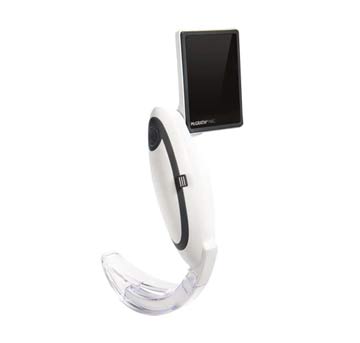
Medtronic
McGrath MAC
800-962-9888
Medtronic touts the enhanced optics and increased durability for routine use of the latest version of its McGrath product. Its current version provides warmer, more natural light with three times the brightness of previous
generations, as well as four times the video resolution. For power savings, its auto-off feature kicks in if the provider forgets to shut it off manually, while its battery life indicator provides minute-by-minute power-remaining info.
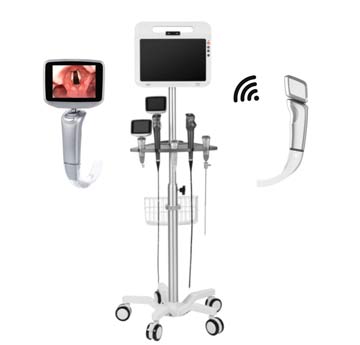
SourceMark
ClearViz
888-786-4765
This device is part of a platform that takes medical distancing while intubating to another level thanks to its wireless capability. Its interchangeable wireless module easily pairs to a 13.3-inch HD monitor, removing the
typical cabling from the equation by employing near-field communication (NFC) technology, which is faster and more secure than Bluetooth. The handle features an "on-the-fly" slide that eliminates the need to keep several batons or handles
on hand, allowing for fast and easy blade change for any patient size.
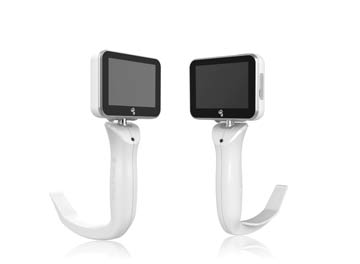
UE Medical Devices
VL460
617-610-2718
UE Medical Devices touts this scope's low-profile blade design, imaging quality and user-friendliness. Building on the seven years its predecessor (the VL400) has been in use, the company says the VL460 offers significant
improvements. The single-use scope features a lightweight three-inch high-def touchscreen with a built-in recording capability that can hold up to 16 hours of video thanks to 32 GB of onboard memory. Its USB-C port allows you to externally
store data as well as charge the unit.
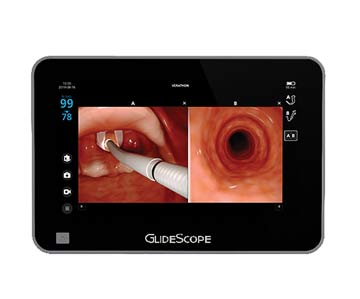
Verathon
GlideScope Core
800-331-2313
Verathon has expanded the ecosystem surrounding its video laryngoscopes. Core is described as an all-in-one "flexible airway visualization system" for not only video laryngoscopy, but also bronchoscopy and multimodal airway
procedures, even offering the capability of simultaneous dual views. Working from its freestanding 10- or 15-inch high-def touchscreen monitor and workstation, providers can capture still images and video, annotate them with patient notes,
and even connect the laryngoscope to larger screens via its HDMI output.
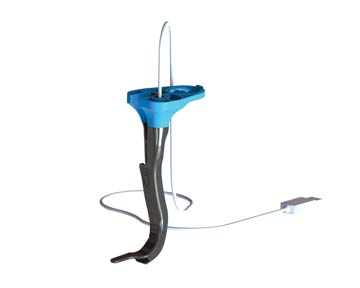
Vivid Medical
VividTrac
650-618-5725
Available in both adult and now pediatric (pictured) versions, this single-use device offers a "bring-your-own screen" solution; you simply hook it up to a computer, tablet or other monitor of your choice via its USB port,
and the video signal can be routed wherever you'd like. No batteries are required, as the USB connection powers the device. The camera provides automatic anti-fogging, while the blade tip is said to position easily at the epiglottic vallecula
to enable direct visualization of the vocal cords no matter how the patient is positioned.
.svg?sfvrsn=be606e78_3)
.svg?sfvrsn=56b2f850_5)